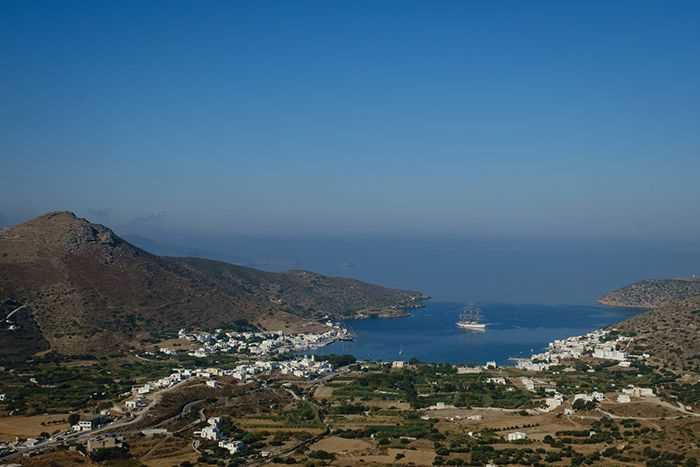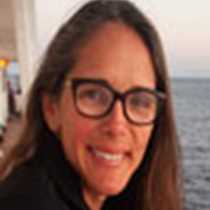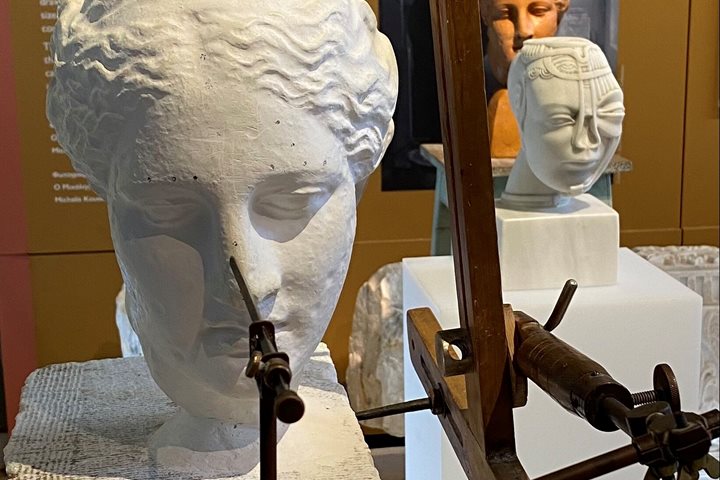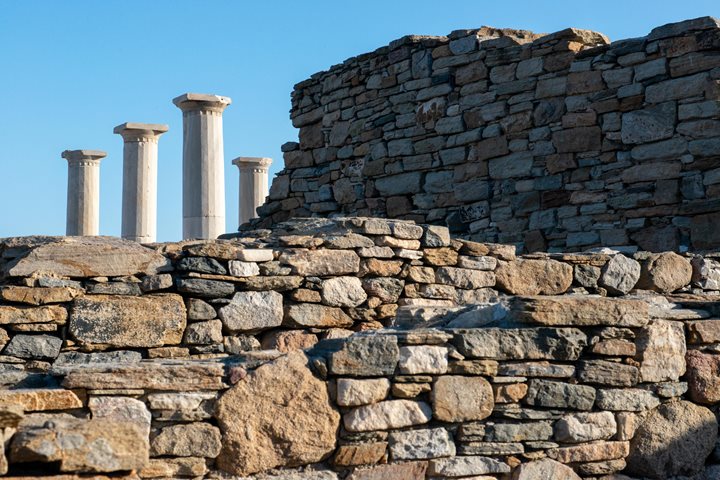At 7:30 a.m., we sailed into the beautiful bay of the village of Katapola on the remote isle of Amorgos, the most southeasterly of the Cyclades with Crete – which exercised influence here in antiquity – just 240 kilometers due south. Our first stop was at the monastery of Panagia Khozoviotissa. Surely this is one of the most wonderfully situated monasteries in the world. It is carved into living cliff rock 300 meters above the blue Aegean. From where our bus was parked, we could see the brilliant whitewashed seven-story monastery clinging like a swallow’s nest to the cliff’s face. And up we started some 350 vertical steps in the bright sun.
First built in A.D. 813, the monastery was restored to its present state in 1088 under the protection of the great Byzantine emperor Alexius I Comnenus. We entered the monastery through a narrow passage cut into the living rock.
Once inside the tiny church, where Kriton provided helpful commentary, we saw the monastic stalls where the monks prayed antiphonally every day. The famous icon of the Blessed Virgin Mary and Child was on display. It is said that a woman named Hozoviossa sent this icon from Palestine and it arrived at this spot in an unmanned boat during the Iconoclastic Controversy of the eighth century. The monastery was built to both honor the icon and to provide a sufficiently remote place for the monks to pray.
After our trek to the monastery we had free time in the beautiful unspoiled Chora. Here, the brilliant white alleys with their bright blue doors and windows were covered over with blooming magenta bougainvillea and white, red, and pink oleanders. It was deliciously beautiful. On our walk through the village, I noticed an ancient Roman tombstone strategically placed in the lintel of one of the houses. Such use of ancient stones was very common.
Once back in Katapola, a few of us went for a brief swim in the cool blue Aegean.
After lunch the crew went aloft and set sails at 2:45 p.m.: We followed Homer’s advice and sailed “in the wine-dark sea.” Our captain gave an informative talk on the Spanker deck on the sails and how they function on a square-rigger. Jennifer then gave a talk on taking photos in the islands, and at 5:00 p.m. Tom Heffernan gave a talk on the complex script of Linear B, which we know now to be the earliest evidence of the Greek language, pushing the date back to 1650 B.C., earlier than Sanskrit and the oldest written vernacular European language.
Tonight, we had the additional treat of the Captain’s welcome dinner, a wonderful opportunity to establish new friendships and compare our stories from the past two days sailing in the blue Aegean.









